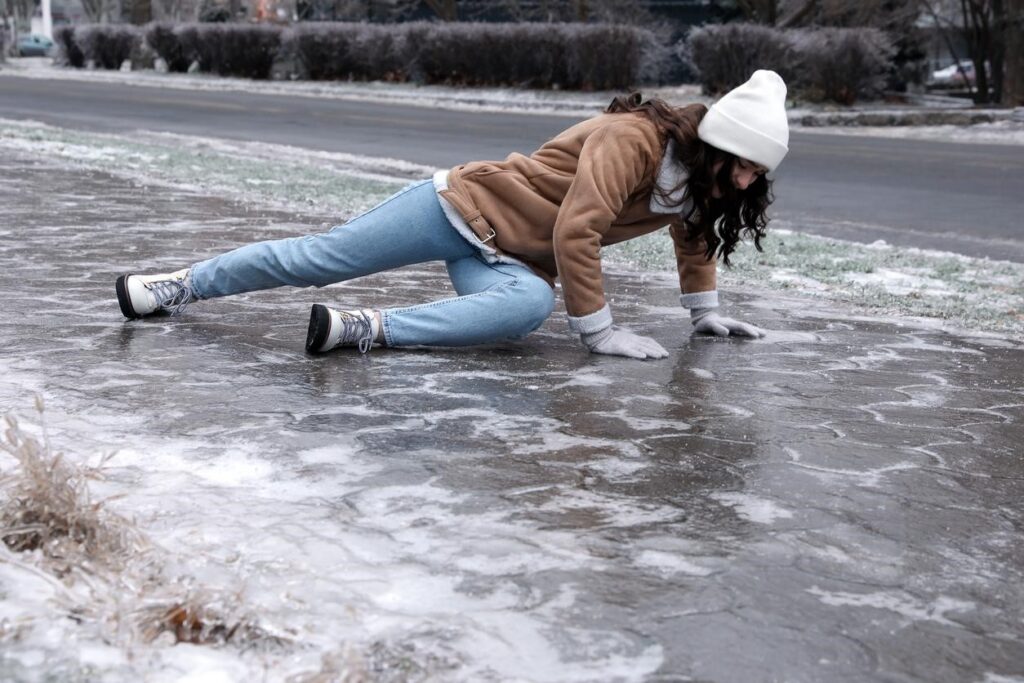Slip and fall deception is a real headache in New York City, affecting businesses and property owners all over. People sometimes stage accidents or blow injuries out of proportion just to cash in. Spotting the early warning signs can save you a lot of money and hassle—and maybe your sanity, too.
If you’re trying to sniff out fake injury reports, watch for things like someone refusing medical help, stories that don’t add up, or “accidents” that only seem to happen where no one’s looking. Keeping good records and using security cameras can really help cut down on these schemes. If you’re a property owner caught in one of these messes, it’s probably smart to talk to a qualified legal advisor to make sure you’re covered and know what to do next.
Recognizing and Preventing Slip and Fall Scams
It’s not always easy to spot a fake claim, but there are some telltale signs. Business owners and insurance folks need to be able to pick out the real accidents from the staged ones. Having video evidence can make a huge difference when someone tries to pull a fast one.
Common Characteristics of Fraudulent Slip and Fall Claims
Phony claims tend to follow some familiar patterns:
- Injuries that just don’t match up with what supposedly happened.
- Accident reports where there wasn’t even a hazard—no wet floor, no cracked tile, nothing.
- People who seem to have a habit of reporting injuries or suing left and right.
- Incidents that happen right after something sketchy nearby, like someone messing with the property to make it dangerous on purpose.
Spotting these patterns can help insurance companies and attorneys weed out folks just looking for a payout. Staying alert to this stuff can spare property owners a lot of unnecessary grief.
Red Flags and Suspicious Behaviors to Watch For
Some things just don’t sit right:
- Someone keeps coming back to where they got “hurt,” especially if they’re bringing friends to take pictures or jot down notes.
- They’re demanding a big settlement, but there’s barely any medical treatment involved—or none at all.
- Lawyers suddenly drop the case as soon as someone mentions possible fraud.
- Evidence that looks tampered with, or hazards that magically appear after the fact—often caught on camera if you’re lucky.
These kinds of red flags should set off alarms for insurers and property managers, so they can dig deeper before anything gets out of hand.
Role of Security Cameras and Surveillance in Fighting Fraud
Honestly, video footage is gold when it comes to proving what really happened. Cameras around your property can catch the moments leading up to and right after a fall. This kind of evidence can:
- Show if someone actually created a hazard just before their “accident.”
- Reveal whether a fall was genuine or, well, a bit of amateur theater.
- Back up or challenge the timeline and the claimant’s movements.
Using surveillance wisely can cut down on bogus claims and let insurance companies focus on people who actually need help. For business owners, having that kind of proof on hand makes it way easier to push back if someone tries to scam you—or to cooperate with your lawyer if things get legal.
Investigating and Responding to False Injury Claims
Dealing with false injury claims is expensive and can really throw a wrench in your day-to-day. You’ve got to be careful—investigate thoroughly, but don’t end up punishing someone who’s actually hurt.
Actions for Property and Business Owners
If you’re running a business or managing a property, tell your insurance company right away if there’s a claim. The sooner you do, the better your chances of saving crucial evidence—think video, witness statements, or even just details about the environment. Having cameras in the right spots can scare off would-be scammers and give you solid proof if anything goes down.
It’s not a bad idea to have someone keep an eye on areas that are more likely to cause accidents. Keep records of your maintenance and fix hazards as soon as you spot them. If you do get a claim, work with the investigators but steer clear of admitting fault—you don’t want to shoot yourself in the foot before you know what’s really going on.
Steps Insurance Companies and Adjusters Take
Insurance companies usually send out adjusters to dig into the details. They’ll look at medical records, expenses, and see if the story matches up with what’s on camera or what witnesses say. They’re on the lookout for things like delays in getting medical help or the lack of hard evidence—like X-rays showing broken bones.
If a claim seems fishy, insurers might hire private investigators to keep tabs on the claimant or look for signs they’re stretching the truth. They’ll also check if this person has a history of making claims or lawsuits. Sometimes, if the risks of fighting it in court outweigh the costs, they’ll just settle for a small amount and move on.
Legal Consequences and Impact on Real Victims
Filing deceptive claims can trigger serious legal backlash—think dismissed lawsuits, fines, and sometimes even criminal charges. Courts might go so far as to flag repeat offenders, basically putting them on a kind of legal watchlist to keep them from clogging up the system. It’s a move that, honestly, makes sense if you’ve ever seen how much time these cases can waste, not to mention the frustration for people with real injuries.
False claims push up insurance payouts, which, unsurprisingly, means higher premiums for everyone else—businesses, property owners, you name it. What’s worse, they cast doubt on folks who are actually hurt and just trying to get fair compensation. Legal teams who know their way around injury disputes are often the first line of defense here, guiding real victims through a process that’s gotten a bit more suspicious than it probably should be.
When questionable claims show up, it’s usually all hands on deck—insurance reps and lawyers working together, trying to make sure things stay fair. No easy answers, but it’s necessary.







